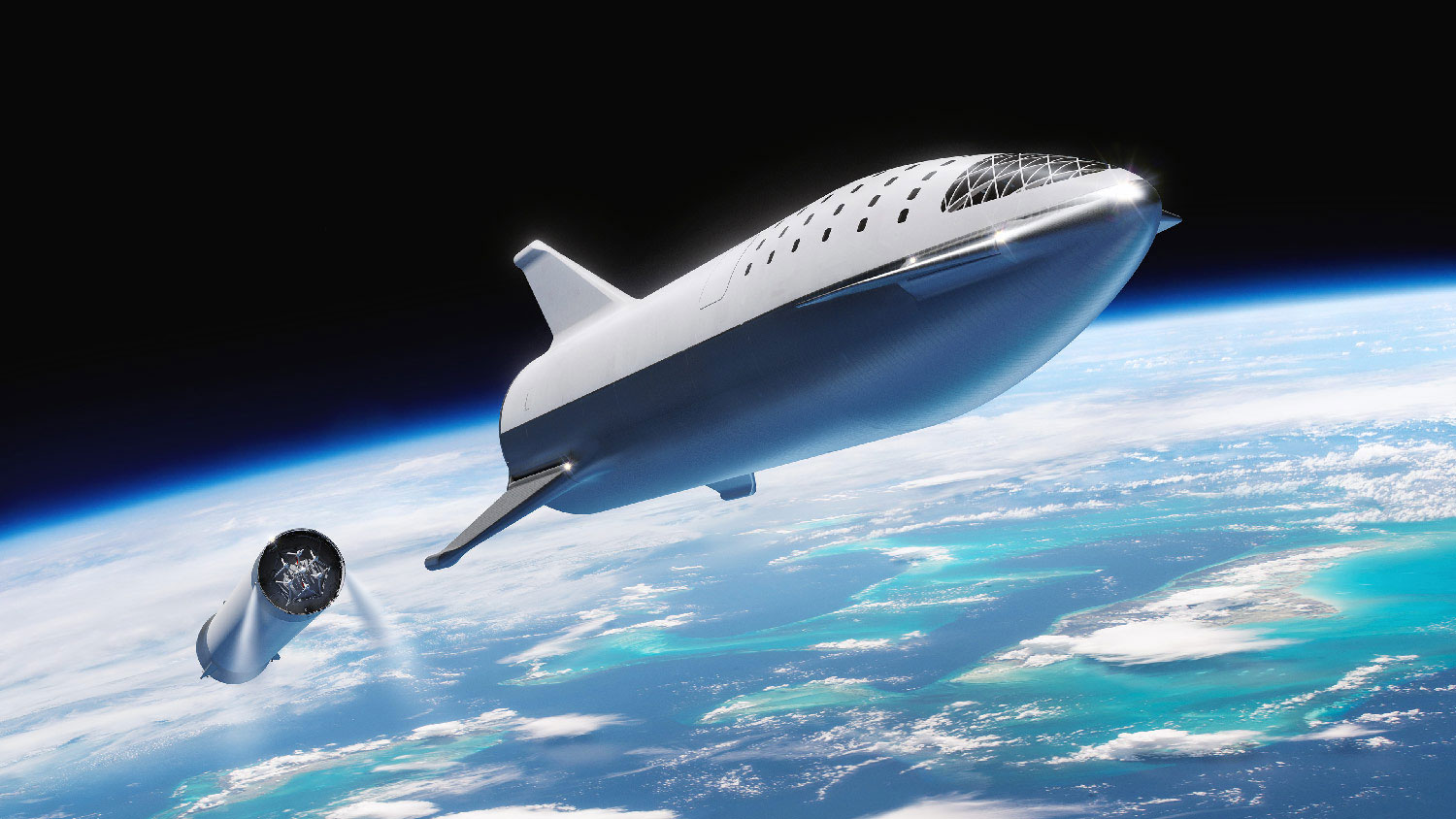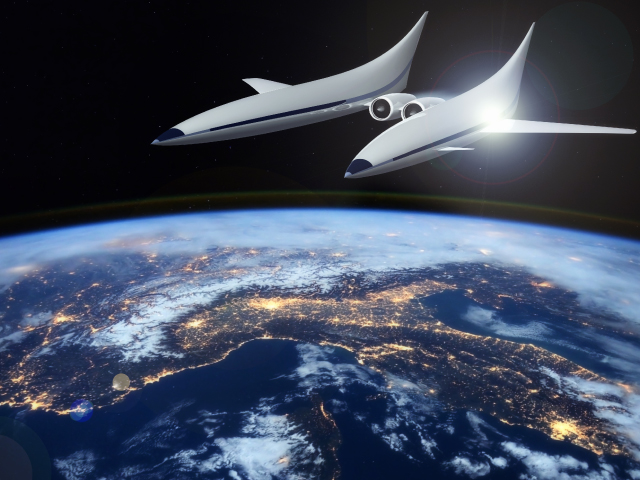
Richard Branson, an American entrepreneur and founder of Virgin Galactic, is a pioneer in space tourism travel. Taking advantage of the ultra-high aerial beauty of the VSS Unity, the crew of two pilots and four passengers flew 85 kilometers above the ground from the larger plane. This was enough distance to see the curvature of the Earth and to be free from the limits of gravity for at least a few minutes.
The path also followed by former Amazon boss Jeff Bezos, which only substantiates space tourism, a growing phenomenon that, for the time being, is reserved only for millionaires or lucky winners of lotteries organized by companies involved in this venture. In the future, however, star exploration may be open to many, and Virgin itself has set a target of 400 flights a year from Spaceport America, in the US state of New Mexico, by the end of 2022.
Space tourism: what is it and what is the history of the phenomenon
It seems that soon more and more people will be able to experience the amazing experience of space flight. Space travel, although started with physiological slowness and caution, is increasingly at the center of ambitious and innovative projects, the futuristic vision of which becomes more and more real. To fully understand it, a precise definition is needed, as well as an analysis that takes into account not only the economic aspect, but also an eminently social one.

Space tourism therefore refers to the latest form of tourism that takes place in outer space. While still in its infancy, there have been isolated cases of private space travel for entertainment purposes at a cost of several million dollars. However, this is not just a recent story: the dream of space travel has always been ingrained in humanity, and space exploration has been punctuated by zero-gravity test, take-off, and missile voyages over the past century. If we want to “go back” in time now, it is no coincidence that from the beginning of space exploration, that is from the late 1950s of the last century, the possibility of exploring the cosmos was not just a pipe dream, but a real opportunity at hand.
It was, after all, the golden age of science fiction, in which the collective imagination was heavily influenced by American achievements and politics, and genre literature treated the subject in a much more detailed, descriptive way. In 1957, Robert A. Heinlein, in his short story “Menace from Earth”, for the first time put forward the hypothesis of a future in which space travel would be used as a true form of tourism, with its own industry and purpose-built and developed facilities. The idea was enthusiastically received by both professionals and ordinary citizens, and in the late 1960s and early 1970s it contributed to the widespread perception that space hotels would exist at the end of the second millennium.
Not only that, many futurologists of the 1970s suggested that in the 21st century the moon would be one of many places families could choose to spend their holidays, but ending the space race with a landing on the Apollo 11 moon reduced interest in space exploration and only the premiere and The relative success of Stanley Kubrick’s 2001 film: A Space Odyssey in 1968 was revived by dreams of space travel. In line with today’s ambitions. From the launch of Sputnik in 1957 to the flight of Yuri Gagarin in 1961, the first man in space, the step was short and the exploration of space took off by leaps and bounds.
If it is true that the era of space conquest and the post-Soviet era opened up star travel to professionals other than astronauts, then to speak of space tourism in the strict sense of the word, we must take a leap forward in 2001. In the same year, MirCorp, the private agency that operated the MIR orbital station, made an offer to sell the seat to a private payer to cover operating costs. American businessman Dennis Tito took the opportunity, who paid $ 20 million. During his training, Mir was doomed to dismantle and Tito decided to move the journey from Mir to the International Space Station.
The new trip, organized by the American company Space Adventures, made Tito the first private paying space tourist. He stayed at the ISS for seven days from April 28, 2001. In 2002, South African businessman Mark Shuttleworth, founder of Ubuntu, joined the ISS as a tourist, and in 2005, Gregory Olsen. After the Columbia space shuttle crash in 2003, all tourism programs were suspended, which resumed in 2006: Anousheh Ansari, the first woman, the first Muslim and the first Iranian in space, and Charles Simonyi of Hungary went into space. All of these five tourists have been classified by NASA as spaceflight travelers, which is the administrative designation for space tourists.
Space tourism: a “rapidly growing” market
“Space tourism is already a reality, even if it is limited to very few people. There were five people, five very rich, very rich people, who were on the International Space Station, but this is very limited,” said Umberto Guidoni, the first Italian astronaut who flew into space in 1996, aboard the space shuttle. In a recent interview, Guidoni himself called for the creation of an international body, as in the case of airlines, that would guarantee safety standards for everyone, both for international space agency vehicles that take professionals into orbit and for tourists.
In addition to its emotional overtones, space tourism is now considered by various companies to be a particularly attractive business sector, with a potential pool of over $ 10 billion. In addition to the already mentioned Virgin Galactic, many other companies have been created over time that see an increasing source of income in space. These are Space Adventures, Starchaser, Blue Origin, Armadillo Aerospace, XCOR Aerospace and Rocketplane Limited, not to mention pan-European Project Enterprise.
For now, the offer includes mainly sub-orbital flights with maximum altitudes of 100-160 kilometers. This type of flight allows the user to stay weightless for three to a maximum of six minutes, observe the panorama of the stars and gaze at the curved horizon of the planet Earth. This is where companies invest the most and with the most encouraging results. All of this at an estimated cost of approximately $ 200,000 per passenger. In order to be able to organize a start with paying passengers from the territory of the USA, companies must have a special license from the Federal Aviation Administration, issued by the Office of Commercial Space Transportation (FAA / AST).

Not only that, but also that a very high degree of security for non-experts who are absolutely unaccustomed to these particular conditions of physical stress is fundamental to space travel. In fact, in some cases, tourists themselves can receive the same pre-flight training that cosmonauts usually do. This training takes place mainly at the Russian Cosmonaut Training Center named after Yuri Gagarin and covers all kinds of experiences.
These include: neutral buoyancy, which simulates weightlessness in a swimming pool where the so-called space walk; centrifuge where acceleration forces of up to 10 g are experienced in a device weighing 30 g; a simulator that, thanks to new technologies, is able to mimic the entire space flight, including docking to the International Space Station; and flight and instrumentation training to ensure the most comprehensive training possible. Participation in the program, needless to say, is reserved only for the happiest, and its price is around tens of thousands of dollars.
In addition to the goals intended for common people by SpaceX, Virgin Galactic and Boeing, there remains in each case a strong scientific interest that will continue to put a strong pressure on the evolution and research of space exploration. We can only look at the stars and dream: who knows if in a few years our name and yours will not appear among those tourists who wanted to observe the cosmos closely, in the spirit of exploration that has always characterized humanity. The same spirit described so well by Rachel Lyons, Executive Director of Space for Humanity: “Outer space offers a new perspective on the Earth that we all share. We must care for the Earth and for us. By giving people all over the world access to this experience, we create a bond between all the inhabitants of our planet. ”



